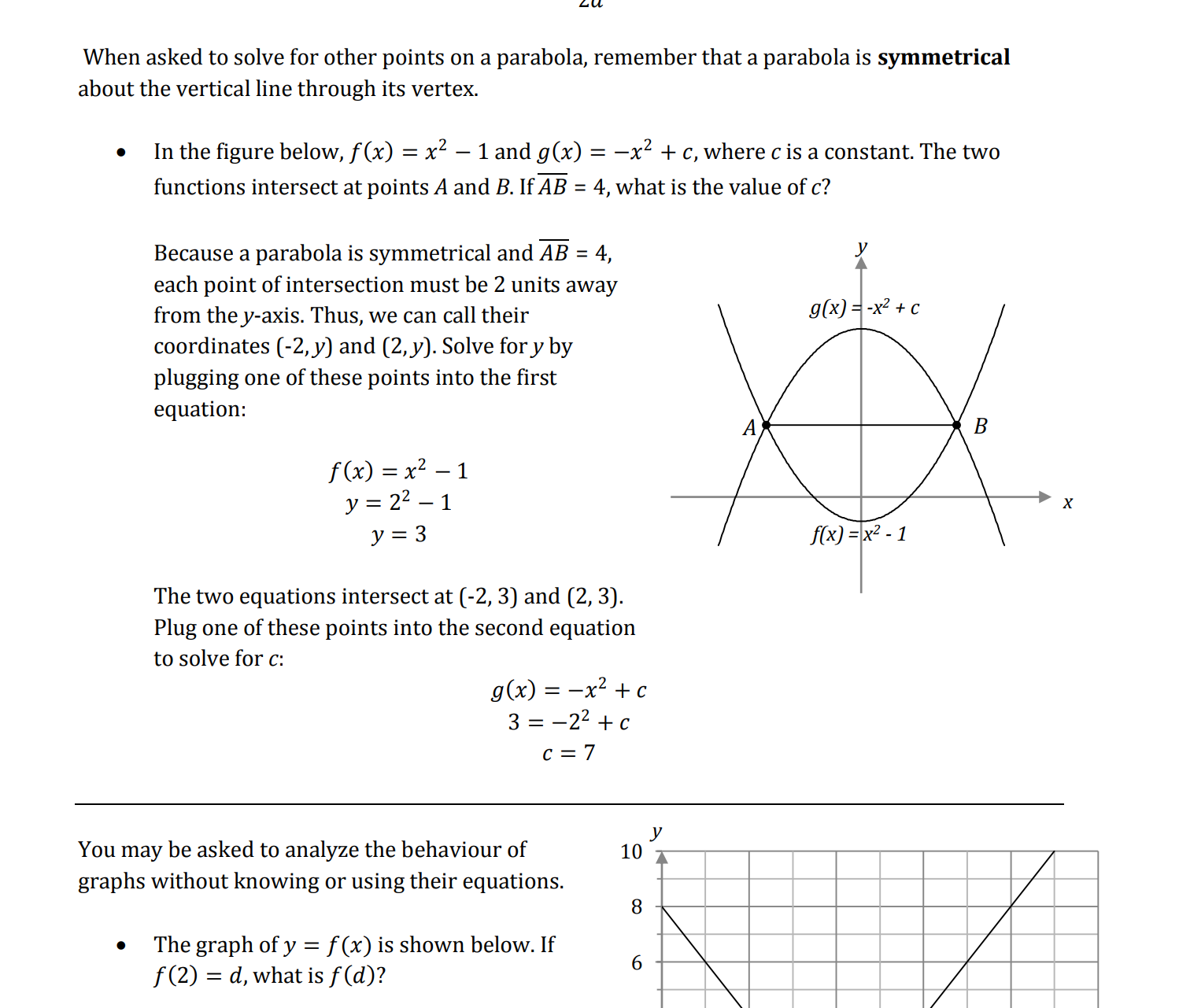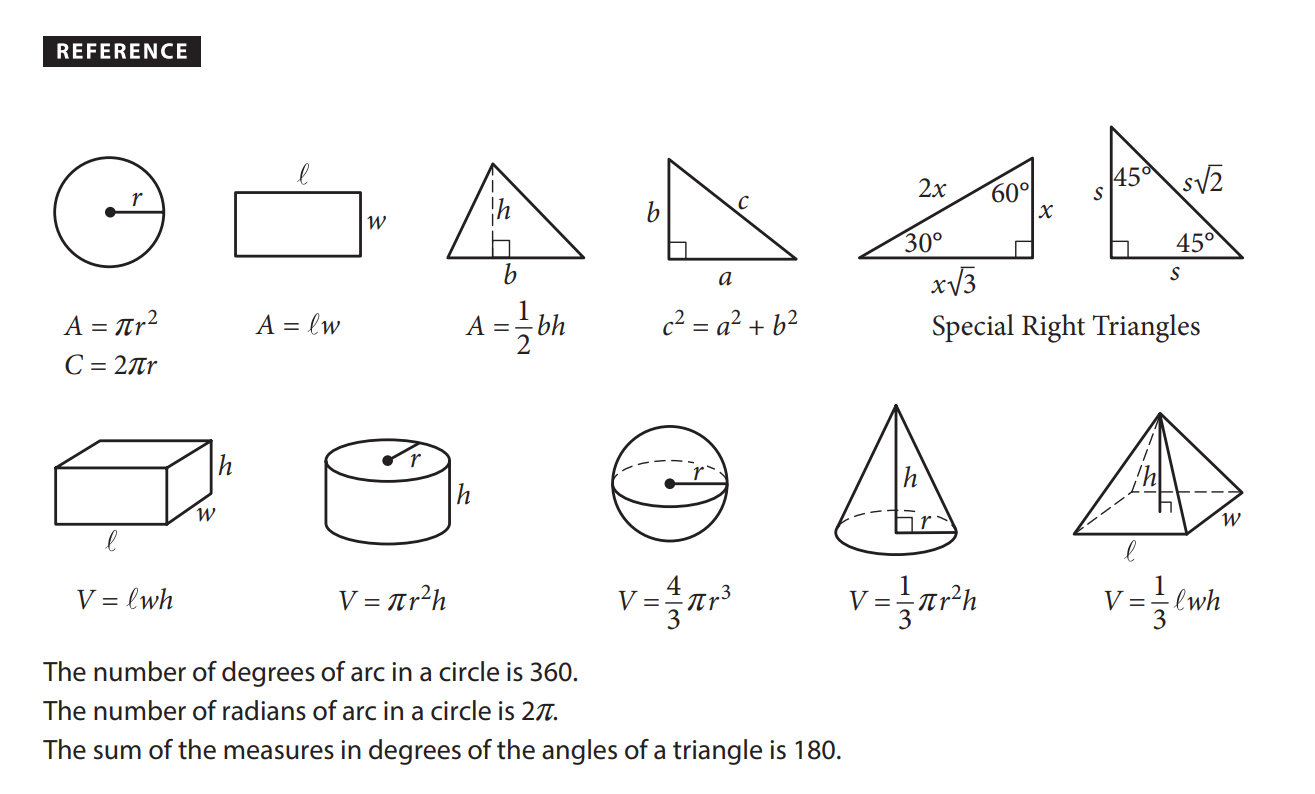The SAT Math sections are crucial components of the SAT exam, accounting for about 50% of the test. For students aiming to excel, understanding the format, content, and strategies for these sections is essential. This guide will provide an in-depth overview of the SAT Math sections, covering everything from the logistics of the test to key content areas and strategies to maximize your score.
Understanding the Logistics of SAT Math Sections
The SAT Math portion is divided into two sections: one that allows the use of a calculator and one that does not. Here’s a breakdown of each section’s structure:
Section 3: Math Without a Calculator
•Time: 25 minutes
•Total Questions: 20
•Multiple-Choice Questions (MCQs): 15
•Grid-Ins (GIs): 5
Section 4: Math With a Calculator
•Time: 55 minutes
•Total Questions: 38
•Multiple-Choice Questions (MCQs): 30
•Grid-Ins (GIs): 8
Both sections provide a reference sheet at the beginning, which includes important formulas. While it’s beneficial to memorize these formulas to save time during the test, the reference sheet will be available if needed.
SAT Math: Key Content Areas
The SAT Math sections cover a range of topics that are grouped into four main categories. Understanding these categories is crucial for effective preparation:
1. Heart of Algebra (19 Questions)
This category focuses on linear equations, systems of equations, and functions. It tests your ability to interpret, build, and solve equations and inequalities.
•Key Topics:
•Solving linear equations and inequalities
•Interpreting linear functions and graphs
•Systems of equations and inequalities
2. Problem-Solving and Data Analysis (17 Questions)
This area assesses your ability to solve problems using ratios, percentages, and proportional reasoning. It also covers data interpretation, including understanding and analyzing graphs, charts, and tables.
•Key Topics:
•Ratios, percentages, and proportions
•Descriptive statistics (mean, median, mode)
•Interpreting and analyzing data in graphs and tables
3. Passport to Advanced Math (16 Questions)
This category involves more complex equations and functions, including quadratic, radical, rational, polynomial, and absolute value equations. These questions require a deeper understanding of algebraic structures.
•Key Topics:
•Manipulating polynomials
•Solving quadratic equations
•Understanding and interpreting functions
4. Additional Topics in Math (6 Questions)
This section includes geometry, trigonometry, and complex numbers. It tests your knowledge of both plane and coordinate geometry, as well as your ability to work with trigonometric functions and identities.
•Key Topics:
•Geometry (including volume, area, and angles)
•Trigonometry (including sine, cosine, and tangent)
•Complex numbers and their properties
Understanding these categories will help you focus your study efforts on the areas that are most heavily tested.
Essential SAT Math Section Strategies
Before diving into specific content areas, it’s important to understand some general strategies that can help you maximize your score:
1. Read the Problem Carefully
Misreading a problem can lead to simple mistakes that could have been avoided. Take your time to carefully read each question, ensuring you understand what is being asked before attempting to solve it.
2. Use Diagrams and Sketches
For geometry and trigonometry questions, drawing a diagram can be incredibly helpful. Sketching out the problem allows you to visualize relationships between different elements, making it easier to solve the problem accurately.
3. Memorize Key Formulas
While the SAT provides a reference sheet, memorizing key formulas can save you valuable time. Focus on formulas related to area, volume, and trigonometry, as these are frequently tested.
4. Familiarize Yourself with Your Calculator
If you’re using a calculator for Section 4, make sure you know how to use its functions effectively. This includes solving systems of equations, performing matrix operations, and other advanced functions that can speed up your problem-solving process.
5. Use the Process of Elimination
When you encounter a difficult multiple-choice question, eliminate any answer choices that are clearly incorrect. This increases your chances of selecting the correct answer even if you have to guess.
6. Skip and Return to Difficult Questions
Since every question on the SAT is worth the same amount of points, don’t waste too much time on particularly difficult questions. Skip them and return to them after you’ve answered the easier ones. This ensures you have enough time to answer as many questions as possible.
7. Practice, Practice, Practice
The most effective way to improve your SAT Math score is through consistent practice. Work through practice problems, take timed quizzes, and review your mistakes to understand where you need to improve.
Additional Resources for SAT Math Preparation
Given the breadth of content covered in the SAT Math sections, utilizing additional resources can be extremely beneficial. Here are some recommended resources to help you prepare:
🖇️ Additional Links + Content Review
Since the SAT covers 3️⃣ whole years of High School Math (Algebra 1, 2, and Geometry/Trig), you need to review a lot of foundational information. To help you out, we linked to some AWESOME 🤩 videos and study guides to help you review all of the math that you need to review to ace the SAT:
Khan Academy—Reviews all of the content through videos and practice questions and breaks the material down into the 4 categories that we just discussed above. Khan Academy also partners with the College Board so that you can sync your current PSAT and SAT scores to help pinpoint your strong 💪 and weak 🐶 areas. Here is a preview of one of their lessons:

Image Courtesy of Khan Academy Heart of Algebra
Ivy Global Math Review—This is a 40-page PDF that describes all of the content on the SAT Math sections. This PDF is awesome because it’s succinct and sectioned into different content areas than the SAT Domains, so you get another perspective 🤔 on the content. The PDF does not cover everything that Khan Academy does, but this does make it easy to work practice ➗ problems and annotate the content sections. Here is a preview of the PDF :

Image Courtesy of Ivy Global Math Review
The Organic Chemistry Tutor’s Math SAT YouTube Review—Helps cram all of the SAT Math content into your brain in 2.5 hours. This review is best for students that are already strong in the math sections or have very little time ⏳ to review for the test. This review has math problems throughout for watchers to practice in all 8 of the mini-lessons in the video 🎦 This review is the shortest on the list and can just refresh you on the most difficult concepts on the test.

Image Courtesy of YouTube
Final Tips and Review
Here’s a quick recap of the key points covered in this guide:
•Math Sections Overview:
•The SAT Math sections consist of a non-calculator section (Section 3) and a calculator section (Section 4).
•Both sections include multiple-choice questions and grid-ins.
•Key Content Areas:
•Focus on mastering the four main categories: Heart of Algebra, Problem-Solving and Data Analysis, Passport to Advanced Math, and Additional Topics in Math.
•Be aware that Algebra 2 is a prerequisite for much of the content on the SAT.
•Effective Strategies:
•Careful reading, use of diagrams, memorization of key formulas, and familiarity with your calculator are all essential strategies.
•Practice regularly to build your confidence and improve your speed and accuracy.
•Additional Resources:
•Utilize online resources like Khan Academy, Ivy Global’s Math Review PDF, and The Organic Chemistry Tutor’s YouTube videos to supplement your study plan.
SAT Math Reference Sheet
On both math sections, the first page will be a formula sheet with all of this information, mainly to help you in the Additional Topics Domain, but more on that later. Try to memorize all these formulas because it can save you a lot of time on test day (because of flipping back and forth between pages 📖), but be aware that you will have the reference sheet for the test:

Image Courtesy of the College Board’s SAT Overview PDF
Conclusion: Conquering the SAT Math Sections
Success on the SAT Math sections comes down to a combination of content knowledge, strategic problem-solving, and consistent practice. By focusing on the key areas discussed in this guide and employing the strategies outlined, you’ll be well-equipped to tackle the SAT Math sections with confidence. Remember, practice is the key to improvement, so keep working through problems and refining your approach until test day. Good luck!
© NUMBERS. All rights reserved.
AP® and SAT ® are trademarks registered by the College Board. College Board is not affiliated with nor endorses this website.






